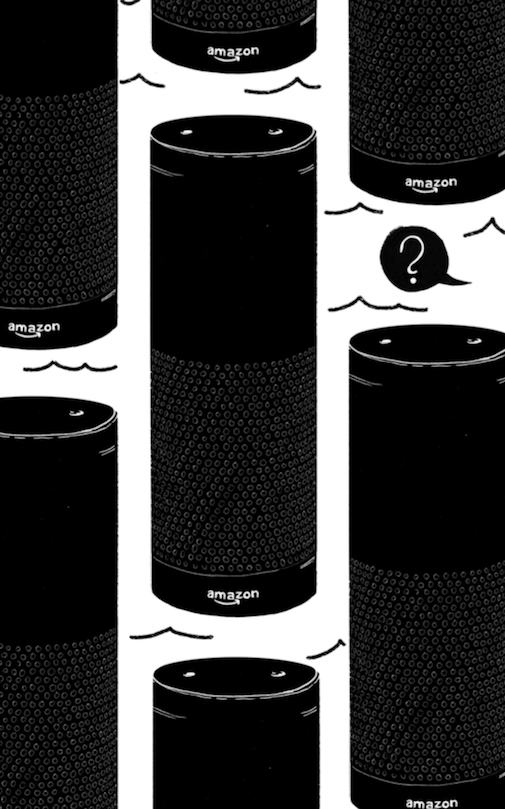ZEITGUIDE TO AMAZON

You’ve probably read about (and possibly contributed to) Amazon’s record-breaking sales so far this holiday season. But conquering online retail has just been a first step for Amazon in their slow march to world domination.
When Amazon.com first entered the marketplace in 1995, it was just an online book peddler. It now casts a huge shadow over the U.S. economy. As the new report “Amazon’s Stranglehold” sums it up: “Today, half of all U.S. households are subscribed to the membership program Amazon Prime, half of all online shopping searches start directly on Amazon, and Amazon captures nearly one in every two dollars that Americans spend online.”
Amazon sells more apparel than any retailer except Walmart. It is starting to challenge local grocery stores with Amazon Fresh, its grocery delivery service. John Blackledge, a Cowen analyst, estimates Amazon Fresh sales will grow from $9 billion to $23 billion in five years.
Echo, its voice-directed hub for everything in your home, is becoming the next must-have consumer tech product—even though we don’t even have a word for what this screen-less, keyboard-less computer is. As users find movie times, make reservations and search recipes, Amazon is gaining more valuable data.
On top of that, Amazon Web Services (AWS) provides cloud on-demand services that supports the data infrastructure for hundreds of companies, including Airbnb, Coca-Cola and Unilever.
Given that more than half of U.S. online consumers begin their product searches on Amazon.com, its Amazon Marketing Services has even become an effective alternative to Google’s advertising program, AdWords.
Amazon’s ambitions have even extended to competing with its delivery partners, UPS and FedEx.
And the company’s designs extend well beyond the U.S. One-third ($107 billion) of its sales were international last year. It’s retail platform operates in over 10 countries, it is the second biggest ecommerce platform in India and plans to launch a platform specific to Australia in September 2017.
Its international designs have extended to content as well. The retailer recently announced it plans to extend its Prime Instant Video service from five to 200 countries on an expected $7 billion budget—$1 billion and ten countries more than Netflix’s.
For any of us who love the ease of shopping on the platform, the assurance of free two-day shipping or any of its original content on Prime, the company’s continued growth may sound like more of a good thing.
But here’s where we’re cautioned to remember what it means to have too much of a good thing.
As Amazon develops hundreds of products under its own private label (informed by the mass of information they possess on what we’re already buying), the site is increasingly making its own products the first thing you’ll find when you search. And for the items it hasn’t yet branded as its own, it can use the power of its platform to force businesses to supply them on Amazon.com for them, at what amounts to a tax paid to Amazon.
As the “Amazon’s Stranglehold” report puts it, “It would be as if Walmart owned most of our malls and Main Streets, decided the terms by which its rivals could rent these spaces, and oversaw every sale they made.”
